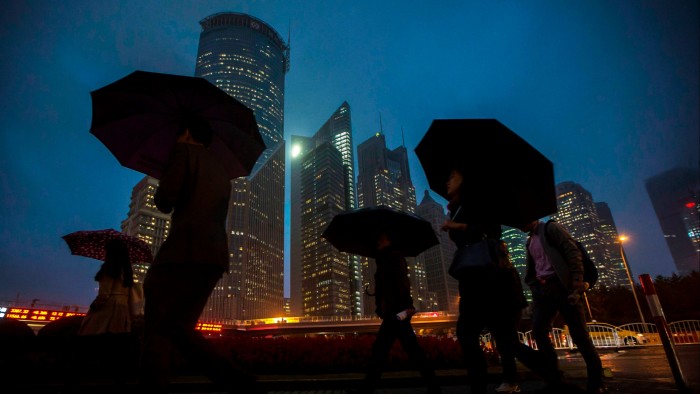Unlock the Editor’s Digest for free
Roula Khalaf, Editor of the FT, selects her favourite stories in this weekly newsletter.
Few subjects bring out the cranks like overnight trading. Theories as to why US stocks tend to rip when regular markets are closed, then drift when they’re open, range from narrowly conspiratorial to grandly conspiratorial. Anyone who says in print that iffy-looking night moves might be explained by benign stuff* can expect a few weeks of furious correspondence about how they’re part of a cover-up.**
Meanwhile, in China, everything’s upside down and no one cares. Chinese stock markets tend to fall overnight and rise during the regular session. This apparently unique feature of the world’s second-largest stock market has been the subject of a couple of academic papers but has attracted very little mainstream discussion.
Part of the reason is that China’s weird. It has a rule — somewhat confusingly called T+1 — which restricts traders from buying then selling shares within the same day. Selling then buying back within a day is fine; buying means being locked in until tomorrow.
So because shares bought late in the day can be flipped quicker than those bought early, it makes sense for Chinese opening prices to be at a discount to the previous day’s close. The lock-in discount then narrows as the session progresses. Shanghai, while it’s open for business, is built to only go up.
Another weird thing about China is that it’s mostly retail. In ordinary stock markets, institutions use the closing auction to square their books. But very few institutions involve themselves with onshore China, and the few that do can’t trade that way because of T+1 restrictions. There’s relatively little professional-grade arbitrage and no end-of-day clearing effect.
All of the above might explain China’s so-called overnight return puzzle, but not its close relation, the so-called opening return puzzle.
Any lock-in discount demanded by buyers should narrow gradually as time passes, so it would make intuitive sense for Chinese stocks to go up intraday in a straight line. They don’t. There’s a big pop at the start and a smaller pop at the end:
The above chart’s from a new preprint by Haobo Jianga and Xinping Lia of Peking University School of Economics. Their take is that it’s all a natural reaction to rampant insider trading, or at least the suspicion of it.
T+1 restrictions mean the uninformed are at the mercy of the informed, who can in effect choke off selling pressure temporarily by finding mug buyers for their shares ahead of non-public negative news.
Jianga and Lia find that in times of increased information asymmetry, early-session buyers ask for a bigger rug-pull discount. The effect is particularly pronounced in the period before earnings announcements and for small cap stocks.
Liquidity helps fix this. The risk of being locked in all day with something unpleasant encourages market makers to bid as low as possible at the open, or not at all. A lot of fear then dissipates as soon as trading gets started, as informed traders move quickly to mug the uninformed based on whatever came to be known overnight.
Block trades are stacked up in the first half hour so liquidity cleanses the market of the most likely information asymmetries and (all things equal) resets the stock price back to where it was the previous day.
“Our results have significant policy implications,” Jianga and Lia write:
While regulators justify T+1 trading as protection for retail investors against algorithmic traders , our analysis reveals an unintended consequence: This rule amplifies informational disadvantages for less sophisticated investors. This creates a paradoxical scenario in which measures designed to protect investors may inadvertently exacerbate their vulnerability to informed trading. We advocate for complementary supervision, such as enhanced disclosure requirements and market monitoring systems, to mitigate market distortions, rather than just using restrictive interventions.
And good luck with that.
As we’ve emphasised more than once, China’s weird. Conclusions about how things work on a uniquely constricted, punter-powered onshore stock market probably can’t be applied usefully elsewhere. Still, when the subject’s as heated as overnight trading, it’s never a bad thing to look at how regulatory attempts to mitigate potential manipulation have only made things worse.
* After-hours is when most earnings happen; America is the gravitational centre of global finance yet its markets yet regular trading is for just six-and-a-half hours at the back end of each trading day; the importance of closing auctions to institutions and opening auctions to retail make what happens in-between mostly irrelevant; thin overnight volumes can amplify price moves while also adding to trading costs, which for an algorithmic manipulation strategy would present significant design hurdles; etc.
** Emails to robin.wigglesworth@ft.com
https://www.ft.com/content/a5db3a7d-a22a-458c-a04f-717fc93ae002


